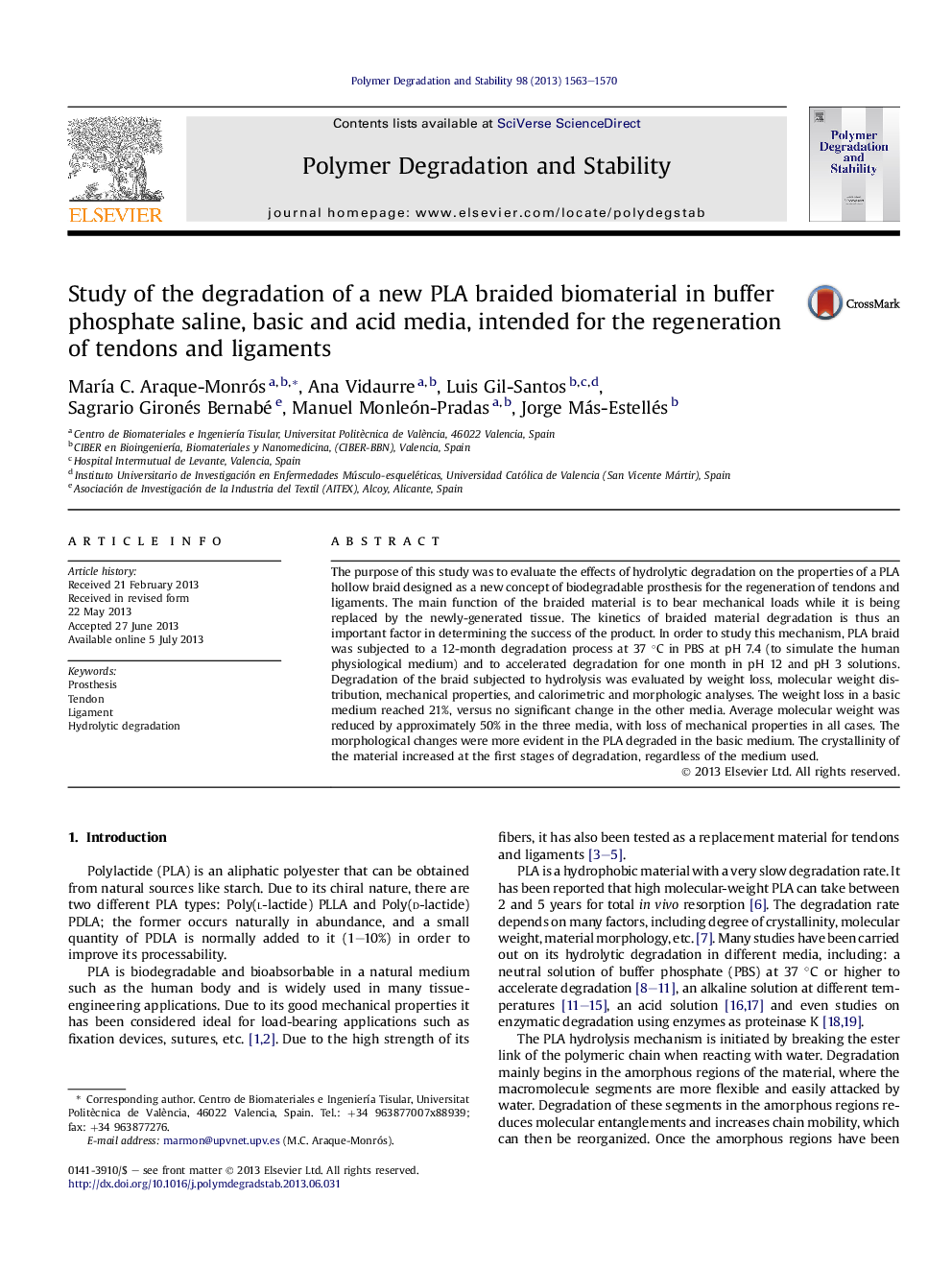| Article ID | Journal | Published Year | Pages | File Type |
|---|---|---|---|---|
| 5202007 | Polymer Degradation and Stability | 2013 | 8 Pages |
Abstract
The purpose of this study was to evaluate the effects of hydrolytic degradation on the properties of a PLA hollow braid designed as a new concept of biodegradable prosthesis for the regeneration of tendons and ligaments. The main function of the braided material is to bear mechanical loads while it is being replaced by the newly-generated tissue. The kinetics of braided material degradation is thus an important factor in determining the success of the product. In order to study this mechanism, PLA braid was subjected to a 12-month degradation process at 37 °C in PBS at pH 7.4 (to simulate the human physiological medium) and to accelerated degradation for one month in pH 12 and pH 3 solutions. Degradation of the braid subjected to hydrolysis was evaluated by weight loss, molecular weight distribution, mechanical properties, and calorimetric and morphologic analyses. The weight loss in a basic medium reached 21%, versus no significant change in the other media. Average molecular weight was reduced by approximately 50% in the three media, with loss of mechanical properties in all cases. The morphological changes were more evident in the PLA degraded in the basic medium. The crystallinity of the material increased at the first stages of degradation, regardless of the medium used.
Related Topics
Physical Sciences and Engineering
Chemistry
Organic Chemistry
Authors
MarÃa C. Araque-Monrós, Ana Vidaurre, Luis Gil-Santos, Sagrario Gironés Bernabé, Manuel Monleón-Pradas, Jorge Más-Estellés,
